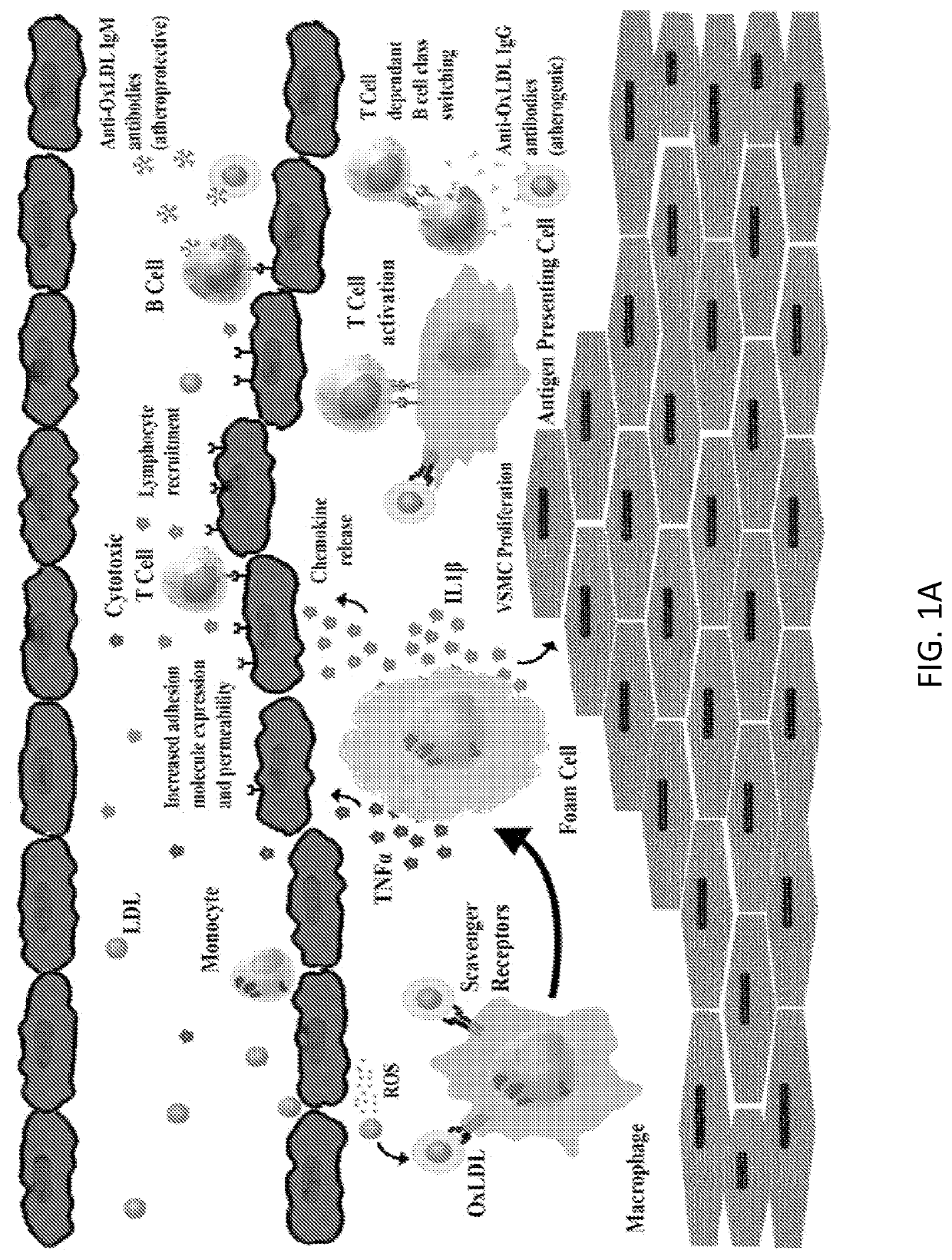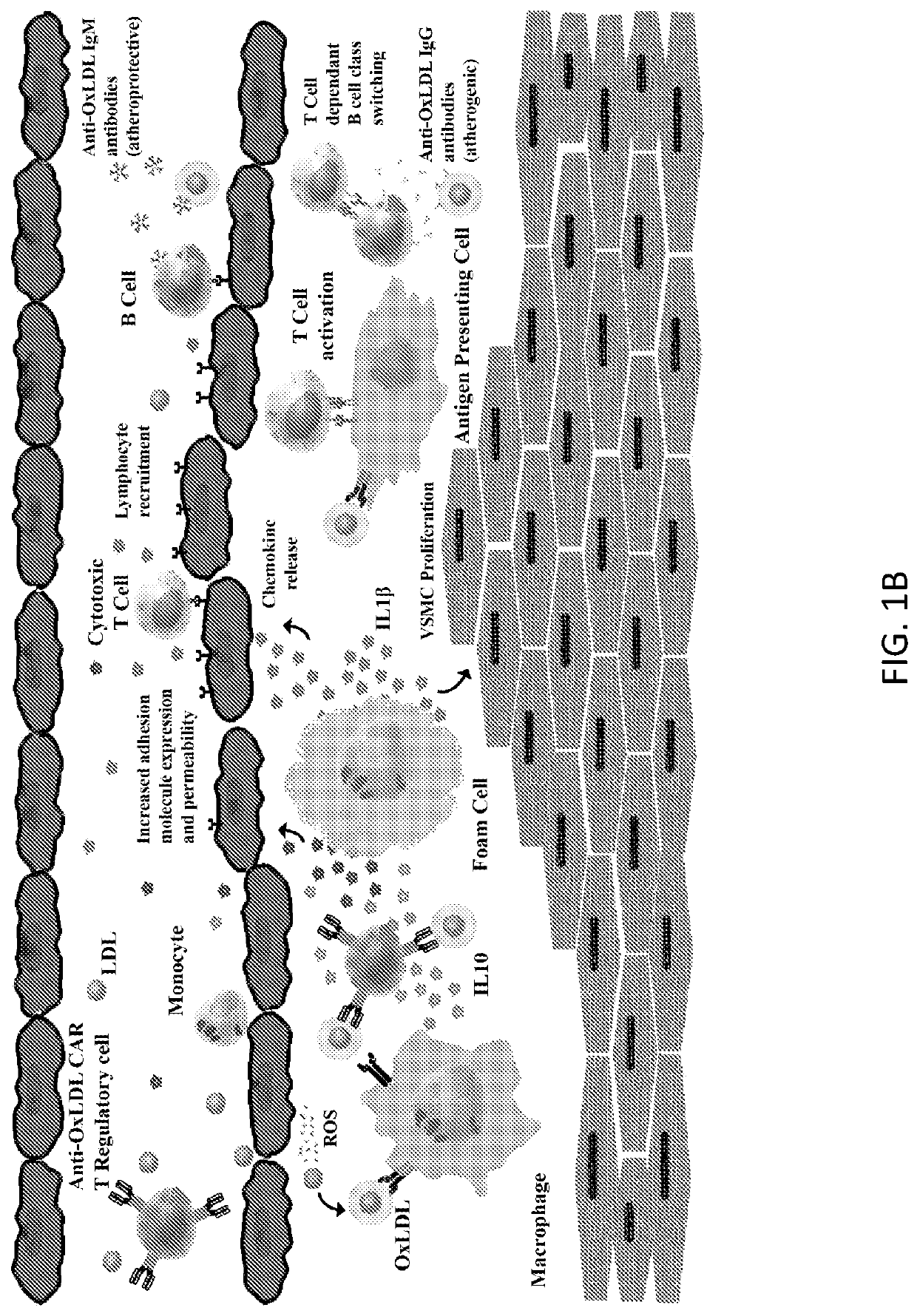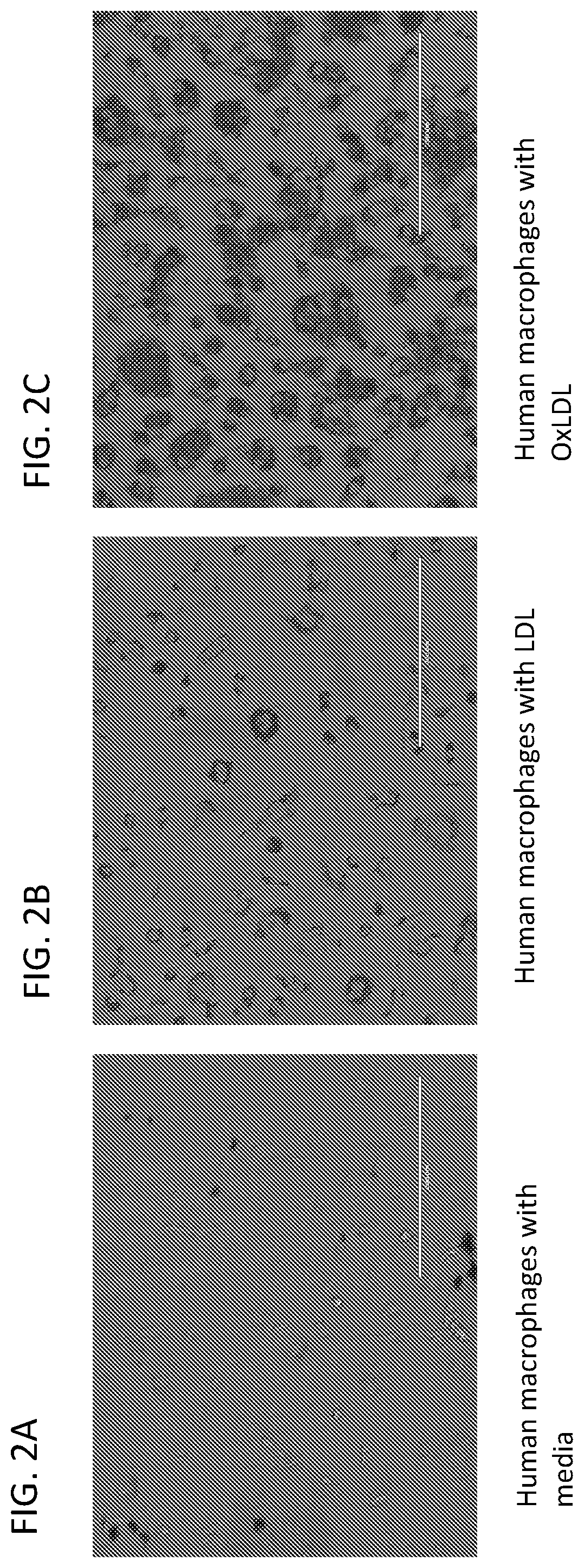Chimeric Antigen Receptor T Regulatory Cells for the Treatment of Atherosclerosis
a technology of chimeric antigen receptor and regulatory cells, which is applied in the direction of immunoglobulins, peptides, and specific cell targeting fusions, etc., can solve the problems of plaque deposition and rupture, inflammation and immune deregulation, and feasible treatment options
- Summary
- Abstract
- Description
- Claims
- Application Information
AI Technical Summary
Benefits of technology
Problems solved by technology
Method used
Image
Examples
experimental examples
[0197]The invention is now described with reference to the following Examples. These Examples are provided for the purpose of illustration only, and the invention is not limited to these Examples, but rather encompasses all variations that are evident as a result of the teachings provided herein.
[0198]The materials and methods employed in these experiments are now described.
[0199]The modified LDL-specific scFv was generated from the 2D03 antibody, disclosed in PCT / EP2006 / 008594. The DNA sequence of the variable heavy and variable light domains of the 2D03 antibody, linked by the DNA sequence of a 3x-GGGGS flexible linker was synthesized and subcloned into lentiviral vectors containing CAR components, including CD8a leader sequence, CD8a hinge sequence, various transmembrane domains, various costimulatory domains, and CD3zeta.
[0200]Vector design: The cDNA sequence of the variable light and heavy chains (scFv) of the IK17 / IEI-E3 / 2D03 mAb were separated by a 3xGGGGS linker and custom s...
example 1
Incubation of Macrophages with OxLDL Induces Foam Cell Formation
[0215]Human macrophages were plated and incubated in R10 media alone (FIG. 2A), with 10 mg / ml Dil-LDL (FIG. 2B) or with 10 mg / ml Dil-OxLDL (FIG. 2C) for 24 hours and then imaged with phase contrast microscopy. Dil-LDL refers to low density lipoprotein, labeled with 1,1′-dioctadecyl-3,3,3′,3′-tetramethyl-indocarbocyanine perchlorate (a fluorescent molecule). This allows for visualization of LDL and can be purchased commercially. Dil-OxLDL refers to oxidized LDL labeled with 1,1′-dioctadecyl-3,3,3′,3′-tetramethyl-indocarbocyanine perchlorate (a fluorescent molecule). This allows for visualization of OxLDL and can be purchased commercially. These results demonstrated the unregulated uptake of modified LDL in macrophages that resulted in foam cell formation and plaque development.
example 2
Design and Construction of Anti-OxLDL CARs
[0216]Three CARs were developed from previously identified OxLDL antibodies, IK17, 2D03 and IEI-E3 (Tsimikas, S. et al. (2011) J. Am. Coll. Cardiol. 58, 1715-27; Schiopu, A. et al. (2007) J. Am. Coll. Cardiol. 50, 2313-2318). After identifying variable heavy and variable light chains of the IK17, 2D03 and IEI-E3 mAbs, single chain variable fragments (scFvs) were generated by linking the domains with a 3X(GGGGS) spacer and then incorporated into a CAR backbone containing a CD8a hinge and transmembrane domain, a 4-1BB or CD28 intracellular signaling domain (ICD) and a CD3Z activation domain (FIG. 3A). During preliminary experiments, normal human donor T cells were stimulated with anti-CD3 and anti-CD28 mAb-coated magnetic beads and transduced with a lentiviral vector encoding the CAR. All CARs were expressed constitutively using an EF1a promoter, and, in a typical experiment, 40-60% of T cells expressed the CAR (FIG. 3B).
PUM
| Property | Measurement | Unit |
|---|---|---|
| Density | aaaaa | aaaaa |
Abstract
Description
Claims
Application Information
 Login to View More
Login to View More - R&D
- Intellectual Property
- Life Sciences
- Materials
- Tech Scout
- Unparalleled Data Quality
- Higher Quality Content
- 60% Fewer Hallucinations
Browse by: Latest US Patents, China's latest patents, Technical Efficacy Thesaurus, Application Domain, Technology Topic, Popular Technical Reports.
© 2025 PatSnap. All rights reserved.Legal|Privacy policy|Modern Slavery Act Transparency Statement|Sitemap|About US| Contact US: help@patsnap.com



